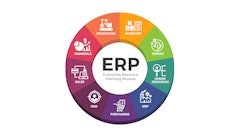
Analysis shows that, on an absolute basis, overall resilience has rebounded to post-pandemic highs, but significant vulnerabilities remain, as outlined in Accenture’s “Resilience Redefined” report.
Operational resilience, for example, is starting to show deeply rooted cracks. However, a vast majority of companies lack this capability because they run supply chains manually, as highlighted in Accenture’s “Making autonomous supply chains real” report.
“To unlock the real value of AI-driven autonomy in supply chains, companies must get three things right. First, executive sponsorship: when CEOs and senior leaders drive an initiative and link it to clear business outcomes, the likelihood of achieving success rate triples. Second, education: when teams, from the boardroom to the shop floor, understand what AI is and what it can do before deployment, the probability of achieving ROI targets goes up six times. Third, data: clean, connected and accessible data is the backbone of any AI system. When these three are in place, companies don’t just improve performance, they increase the odds of seeing measurable returns,” says Kris Timmermans, global SC&O lead at Accenture.
“In today’s world of frequent supply chain shocks, autonomy is not just innovation, it’s a resilience strategy. Companies that can see, decide and act faster through disruption will lead the way. Our study finds 86% of leaders believe autonomy reduces costs, and 77% say it improves agility, showing this is now foundational, not experimental. Future value will come from rethinking the entire system and building adaptability from the ground up. Those investing steadily in AI and related technologies are advancing, while others risk falling behind. Autonomy requires ongoing effort and a shift in how companies operate to build lasting resilience,” adds Max Blanchet, global SC&O, strategy lead, Accenture.
Key takeaways:
· Accenture’s data shows a 4% drop in operational resilience during 2018-2024. 91% of companies in the bottom quartile pre-pandemic remain stuck there, tied to cost-efficient but inflexible operating models. As a result, fewer than 15% consistently achieve long-term profitable growth.
· At the same time, the supply chains of an average company are still only 21% autonomous. Autonomy in this context means processes are automated and decision-making is delegated to intelligent AI-powered systems.
· 66% plan to increase supply chain autonomy, expecting it will cut reaction and recovery times from disruptions by 62% and 60%, respectively. The average response time, currently 11 days, could potentially shrink to just 4.
· Leaders anticipate gains in key levers: a 5% improvement in on-time-in-full (OTIF), a core customer service metric and a 4% reduction in cost of goods sold (COGS). Together, these shifts could enhance EBITDA, depending on the company’s cost and revenue structure.
· Additional benefits of autonomy include 27% shorter order lead times, a 25% increase in labor productivity, and for nearly four in ten companies, a projected 16% cut in carbon emissions.
· While supply chain autonomy remains low overall, some domains are ahead. For example, both manufacturing and customer and field support are at 24%. Logistics, on the other hand, is below average at 19%. Autonomy is lowest in operational purchasing (supplier contracting, procure-to-pay) at 14%.
· Supply chain autonomy also varies by industry. The most advanced industries are in the discrete manufacturing areas (automotive, semiconductors, aerospace and defense), whereas process-oriented sectors (oil and gas, chemicals) currently lag.
















